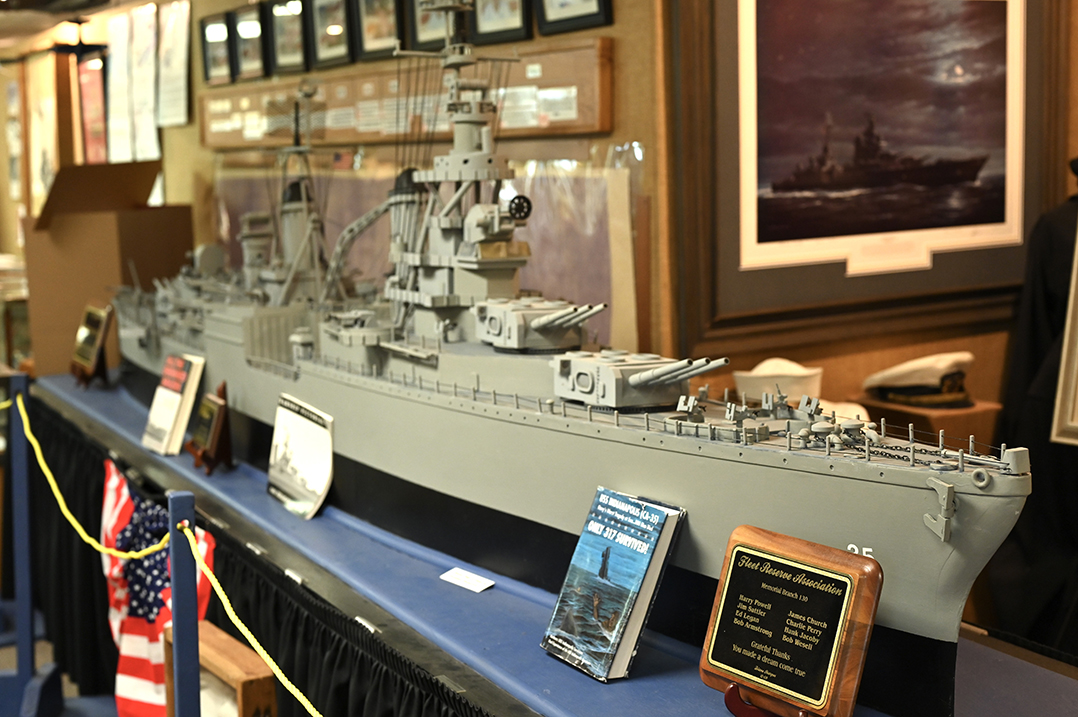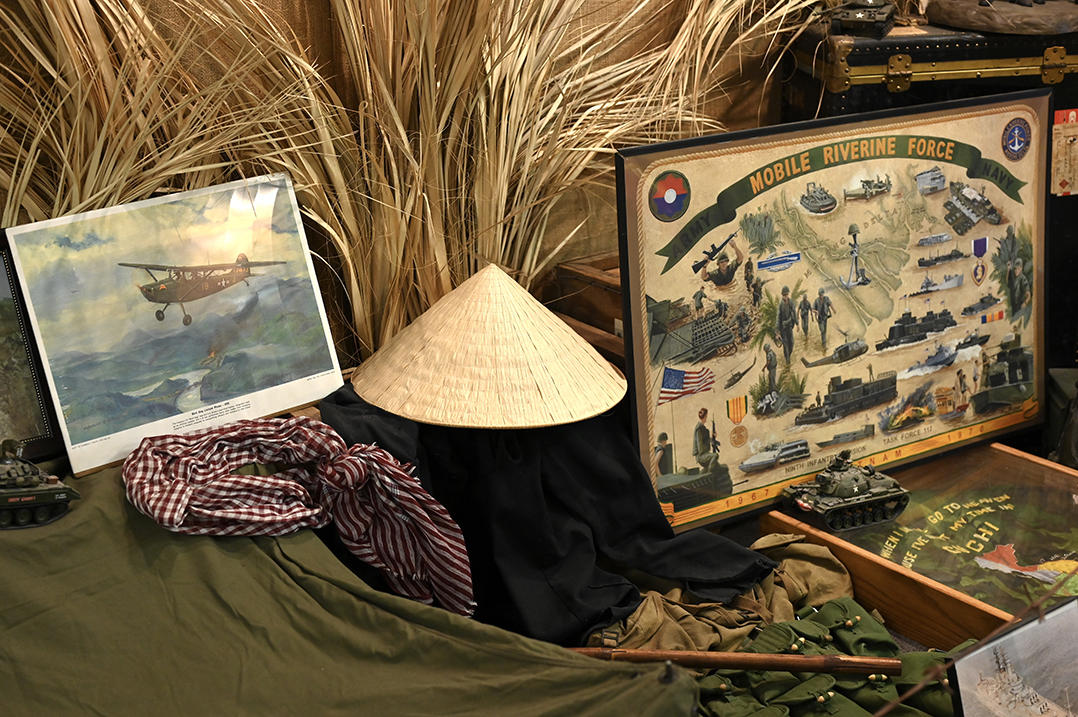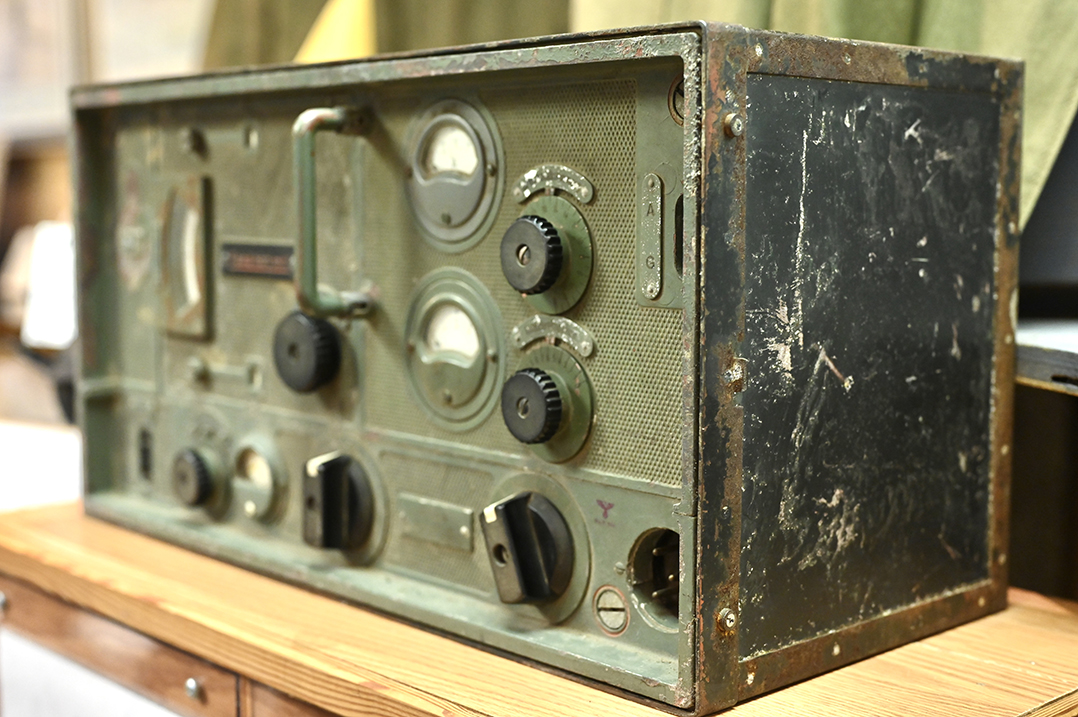Tucked away in one of the many former military buildings at Fort Harrison State Park is a wealth of information and artifacts from all of America’s wars and conflicts of the 20th century.
The Museum of 20th Century Warfare is small but takes full advantage of the space it has. After entering, guests start right at the beginning of the 20th century, with the China Relief Expedition that kicked off in 1900. During that military effort, U.S. soldiers rescued citizens and other foreign nations during the Boxer Rebellion — an anti-colonial uprising in China.
Museum President Chris Schneider pointed out the battle streamers on display, noting that the museum was fortunate to have such rare artifacts.
“Outside the military, you don’t normally see them,” he said. “We kind of lucked into them, and we had to contact the Center for Military History and ask, ‘Are we supposed to have these?’ And they said, ‘Yeah, hold onto them.’”

After the China Relief Expedition is the Punitive Expedition, also known as the Mexican Expedition or the Pancho Villa Expedition. That’s when U.S. forces went into Mexico in 1916 in retaliation for an attack on the border town of Columbus, N.M.
“And of course, while that’s going on, you have what became known as the Great War,” Schneider said, referring to the start of World War I.
He pointed out the German “pickle” helmets on display with their characteristic spike on top and noted that World War I saw a lot of technological innovations, including the use of aircraft and tanks. Trench warfare wasn’t new, he said, but World War I took trenches to a whole other level.
Part of the World War I display is a replica of a trench that soldiers would have used for protection during battles. Visitors can walk through the replica, which has corrugated metal to shore up the sides, a boardwalk floor and a small periscope for a glimpse of the surface.
“This is a shallow trench,” Schneider said of the replica on display. “The deepest ones were as far down as 10 feet. Those were communication trenches. The frontline soldiers were usually close to about 6 to 8 feet deep, and you would have a firing step, so you can see over the top. You didn’t poke your head out unless you absolutely had to because it (would) get shot off.”
Innovations continued with World War II, including the discovery of penicillin, which the Allies had, but not the Germans. Schneider said medicine in general improved and pointed to the display of a World War II medic and all the equipment he had to carry onto the field.
“You figure you’re only going to get one medic to a platoon of 30 guys,” he said. “(In) intense combat, out of those 30 guys, 20 are going to end up a casualty within a couple of hours. That guy’s going to be busy.”
The museum includes many models, built by Schneider and other volunteers, depicting tanks and planes. A large model shows what the USS Indianapolis looked like before it was torpedoed by a Japanese submarine and sank on July 30, 1945. Out of the approximately 1,200 people on board the ship, only 317 survived.
Also on display is a replica of the inside of a German Panther battle tank.
“I spent a lot of time putting this thing together,” Schneider said, noting that it’s not quite complete. “I spent a lot of time down in the two Panthers at Fort Knox, and I got a lot of pictures, and I still haven’t built the gun guard.”
Schneider was a tanker in the U.S. Army. He served from 1975 to 1996 in California, Germany and Muncie.
After World War II is the Korean War, which started in 1950. Schneider said that war is not over.
“All we have is an armistice; there is no peace treaty,” he said. “Since the armistice in July (of) 1953, we’ve had over 600 Americans killed in South Korea by North Korean action.”
The next conflict in the museum is the Vietnam War, with many items brought back by veterans and donated or loaned for public display.
“After Vietnam, you’ve only got two small operations, Grenada, and Panama, and then you jump to Desert Storm, which is the largest U.S. military deployment since World War II,” Schneider said. “It was even slightly bigger than Vietnam.”
Schneider said Desert Storm also was the most successful military campaign in U.S. history.
“By the time it was over with, the Iraqis were wondering, ‘What hit us?’ Because it was over so fast,” he said. “The air war was unlike anything they’d ever seen. We were prepared to fight the Third World War; the Iraqis were prepared to fight the Iranians again.”
The museum has a small display honoring the U.S. Coast Guard, which became part of the Department of Defense after the Sept. 11, 2001, terrorist attacks on the United States. It also has a library with more than 4,000 books on 20th-century military history, and a small chapel dedicated to four military chaplains who were killed when the SS Dorchester was sunk by a German U-boat during World War II.
The Museum of 20th Century Warfare operates solely on donations. Schneider said it was founded in 2004 and offered traveling exhibits until they moved into the Fort Harrison State Park building in May of 2010.
Information about the museum’s events can be found on their Facebook page. Look for M20CW – Museum of 20th Century Warfare.
Museum offers special displays and events
While the Museum of 20th Century Warfare is packed full of artifacts, what’s on display is only part of the museum’s collection. Organizers have regular special displays that they set up throughout the year for the public to view more items from specific conflicts.
On Sept. 9 and 10, the museum will host a living history program called “Remembering the Vietnam War.” Replica camps and displays will be open for viewing 10 a.m. to 4 p.m. Sept. 9, and 10 a.m. to 2:30 p.m. Sept. 10. The event will include re-enactors representing U.S. forces in camps outside the museum. A special display of uniforms and equipment will be open in the building next to the museum.
Other special events and displays coming up are:
- Operation Market Garden, a World War II mini display, on Sept. 23
- A World War I mini display on Nov. 4
- Africa: Independence and the Cold War on Nov. 11
- Battle of the Bulge display Dec. 15-17; Dec. 22-23; Dec. 29-30; and Jan. 5-7





